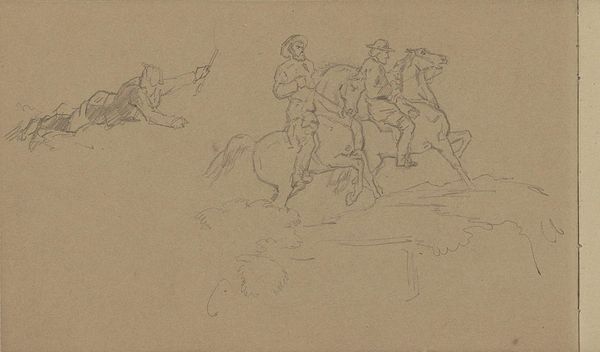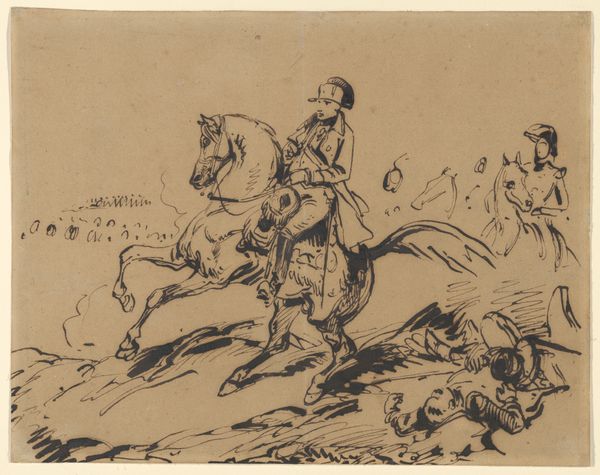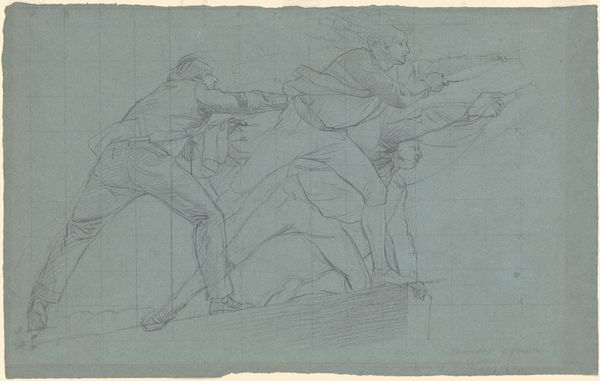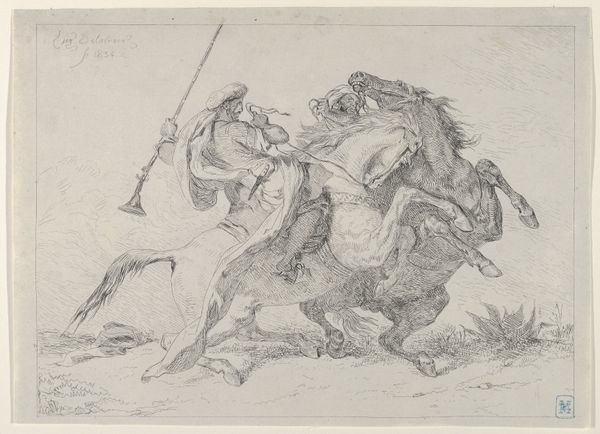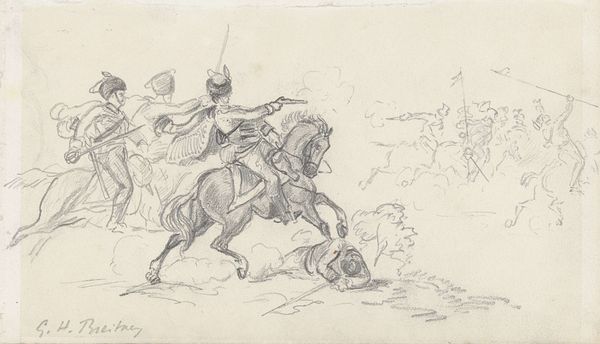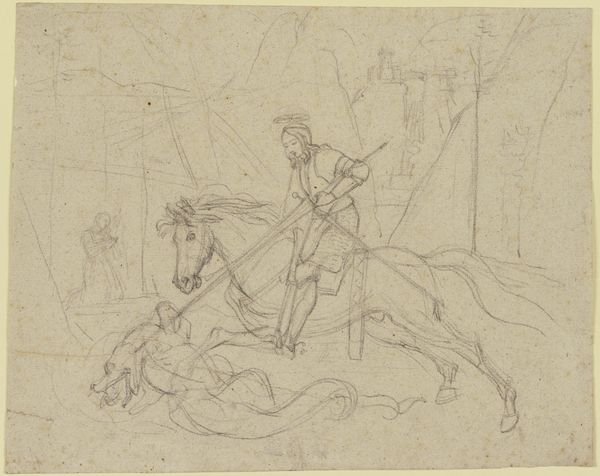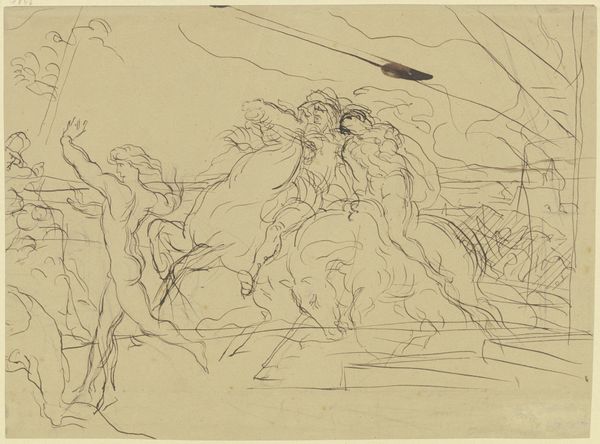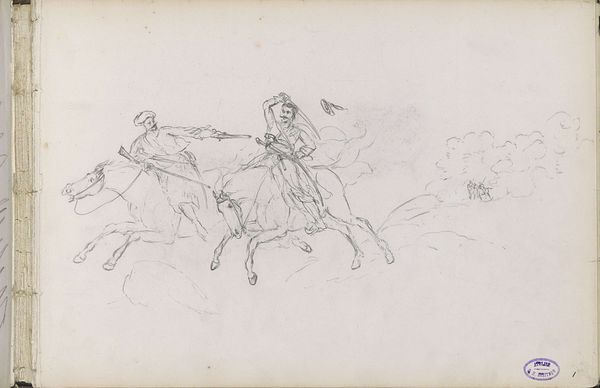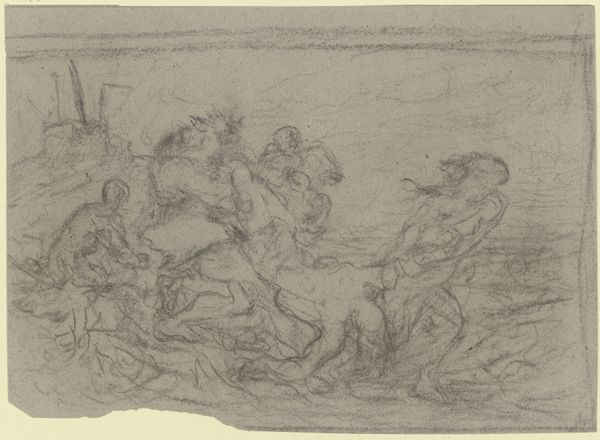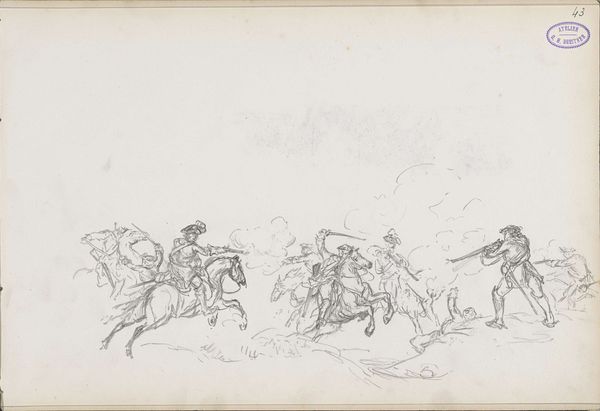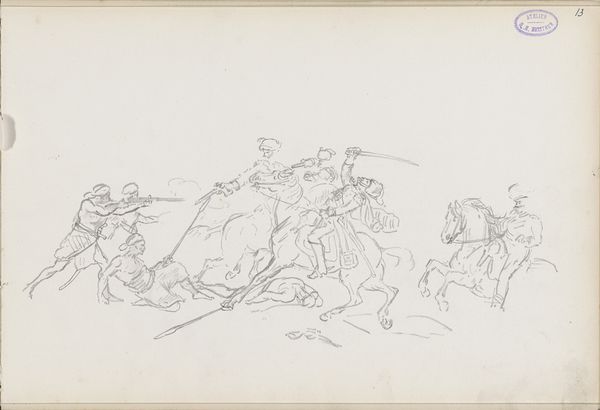
drawing, paper, ink, indian-ink
#
drawing
#
light pencil work
#
ink drawing
#
16_19th-century
#
pen sketch
#
incomplete sketchy
#
paper
#
personal sketchbook
#
ink
#
german
#
ink drawing experimentation
#
indian-ink
#
pen-ink sketch
#
sketchbook drawing
#
sketchbook art
#
initial sketch
Copyright: Public Domain
Curator: Today, we're looking at Rudolf Friedrich August Henneberg's drawing, "The Pursuit of Happiness," created circa 1860-1868. It’s currently housed at the Städel Museum. Editor: It feels so ephemeral, almost like a dream rapidly fading from memory. The stark ink against the paper creates an incredible sense of motion. Curator: Yes, it's a vibrant example of Henneberg's initial sketch work. Using ink and possibly light pencil work on paper, it provides a look into his process and artistic experimentation. The very *idea* of pursuing happiness is materialized through pen strokes, becoming almost a commodity, no? Consider what chasing happiness might have meant in the socio-political context of 19th-century Germany. Editor: Absolutely. The sketchy and seemingly incomplete nature of the composition forces you to focus on form, even absence of form. See the implied lines and negative spaces creating dynamic tensions! The subjects almost blend into one another with their rapid gestural lines. I'm drawn to how Henneberg uses the materiality of ink, a medium typically associated with precision, to create an atmosphere of impermanence and the pursuit. Curator: Exactly! It challenges conventional art boundaries. Is this “high art” or mere “craft”? Thinking about his access to these materials—ink, paper—and the labour involved to even produce these very tools, speaks to certain societal privilege inherent to art-making. And that final step to translate pursuit—labor—into visible product on paper, to potentially sell. It raises compelling questions about who gets to create. Editor: True. It goes without saying that we can analyze form independently while still acknowledging context. Take the perspective; the figures' direction suggests an unbridled flight toward some implied goal line in the composition’s construction itself. Curator: Yes. This all ties into the grander economic picture and potential consumption of artwork during Henneberg's time. The piece acts almost as a product of its socio-economic reality; a reflection perhaps on personal desire in times wrought with societal tension. Editor: In the end, the sketch embodies a beautiful tension between fleeting pursuit and the solidity of ink on paper, inviting endless layers of interpretation from form to material. Curator: I agree; viewing art through multiple lenses allows for appreciation that acknowledges context of production without ever losing respect for intrinsic power of Henneberg’s visual mark making.
Comments
No comments
Be the first to comment and join the conversation on the ultimate creative platform.

